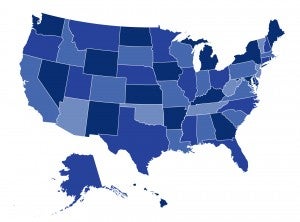Category: Implementing the Affordable Care Act
Unpacking Colorado’s New Guidance on Transgender Health

The Affordable Care Act improved insurance coverage of gender-affirming care, but insurers still impose coverage restrictions that result in discriminatory barriers for transgender people seeking health care services. In a new post for the Commonwealth Fund, Katie Keith reviews the history and current landscape of insurance coverage of gender-affirming care, including Colorado’s changes to its Essential Health Benefits benchmark plan that are aimed at closing coverage gaps.
The Pandemic Exacerbated Gaps in Mental Health Care Access, but State and Federal Enforcement of Parity Requirements Can Help Improve Coverage

The COVID-19 pandemic has brought about a greater need for mental health and substance use disorder (MH/SUD) services, but many have difficulty obtaining timely, affordable care, including the insured. The Mental Health Parity and Addiction Equity Act (MHPAEA) requires plans and insurers that cover MH/SUD services to cover those services in parity with other medical benefits. CHIR’s JoAnn Volk looks at state and federal enforcement of mental health parity requirements, and what these efforts mean for consumers.
Navigator Guide FAQs of the Week: Who is Eligible for Marketplace Coverage?

Open Enrollment is underway, and our newly updated Navigator Resource Guide can help Navigators and consumers throughout the entire enrollment process. During Open Enrollment, CHIR will highlight FAQs that are likely top of mind for consumers and those assisting them. This week, CHIR’s Emma Walsh-Alker focuses on who is eligible for marketplace coverage.
Three New State-Based Marketplaces are Up and Running

We’re a week into Affordable Care Act marketplace open enrollment, and it looks like the three newest state-based marketplaces, Kentucky, Maine, and New Mexico, are off to a solid start. The transition away from the federal marketplace, HealthCare.gov, has taken time, effort, and an up-front investment in the new state-run platforms and other SBM infrastructure. CHIR’s Rachel Swindle takes a look at some of the challenges and opportunities for states running their own marketplaces.
New and Improved Navigator Resource Guide Answers Common Enrollment Questions, Spotlights Innovative Outreach for Communities of Focus
October Research Roundup: What We’re Reading
Building on and Strengthening the ACA: Private Coverage Provisions of the Build Back Better Act

The details of President Biden’s “Build Back Better” legislation were released on October 28. It contains dramatic changes designed to build on and strengthen the Affordable Care Act. CHIR’s Sabrina Corlette reviewed the 1,600+ page bill for provisions affecting people’s access to affordable private coverage, so you don’t have to.
Misleading Marketing of Non-ACA Health Plans Continued During COVID-19 Special Enrollment Period

Millions of Americans are eligible for health insurance plans with low or no premiums and significantly reduced cost-sharing this coming open enrollment, but misleading marketing practices may direct some consumers to alternative plans that lack the Affordable Care Act’s protections. Researchers at CHIR recently replicated a previous secret shopper study to determine if consumers shopping for comprehensive coverage during the COVID-19 special enrollment period were still being directed to these alternative plans.
A Long-term Financing Solution for Mobile Crisis Services

Policymakers increasingly recognize the need for alternatives to law enforcement-driven responses to behavioral health crises. In a new issue brief for the Robert Wood Johnson Foundation’s State Health & Value Strategies program, CHIR teamed up with experts from Manatt Health to provide recommendations for a hybrid coverage and funding approach for mobile crisis services.

